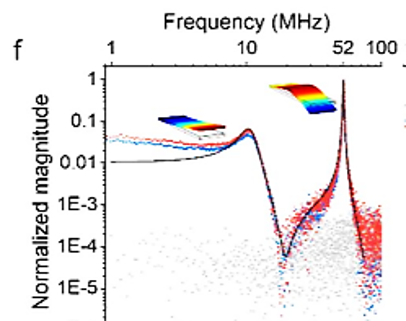Research Projects
Permanent Magnet Mirror for Fusion
June 2021 - August 2021
The Princeton Plasma Physics Laboratory is exploring unconventional approaches to fusion energy. Advances in permanent magnet technology may enable their usage as a simple and accessible option for fusion mirror configurations. Permanent magnets do not require power supplies or cryogenic cooling, and are conveniently adjustable, demountable, and low-cost. Attaining high magnetic field strengths is challenging, though, since the maximum remanent magnetization of the evaluated neodymium boron iron permanent magnets (NdFeB) is 1.4 Tesla. However, by implementing a judicious configuration, we are able to demonstrate a magnetic mirror with field maxima of 5 Tesla. Producing magnetic fields exceeding this strength would begin to demagnetize the permanent magnets at room temperature. The configuration is built from analytic optimized solutions, which can be utilized to generate mirror devices with different geometries and parameters. Possible applications of the theoretical configurations range from plasma confinement in stellarators to medical imaging devices. I presented at the 2021 APS-DPP Conference and the 2021 Sherwood Theoretical Nuclear Fusion Conference. In addition, I was awarded the first place undergraduate award at the 2021 MIT MechE Research Symposium
High-Field Superconductor Testing Rig
Feburary 2020 - Current
Commonwealth Fusion Systems and MIT's Plasma Science and Fusion Center are constructing the novel tokamak SPARC to achieve net-energy fusion. Rapid, large-scale qualification of REBCO superconducting tapes in high-field and cryogenic conditions is necessary in order to construct and assemble the SPARC magnets. Current testing methods are manual and require sections of superconducting tape to be removed from a larger reel to be tested. I am currently developing a reel-to-reel testing rig of REBCO tapes that will isolate and clamp intermediate sections, automate data collection, and regulate the cryochamber. My novel designs, including screw-actuated, tensioned, and pneumatic clamping rigs, will allow for nondestructive and high-speed REBCO testing methods. I presented at the APS-DPP 2020 conference.
Autonomous Vehicles; MIT Computer Science and Artificial Intelligence Laboratory
September 2018 - May 2019
Self-driving cars are becoming a a prolific presence in our streets, but a vital research area is in handling failure. As a part of the Autonomous Vehicles group at MIT’s Computer Science and Artificial Intelligence Laboratory, I developed and implemented a new automata “language” and corresponding optimization algorithm for least-violation planning in road networks for self-driving cars. The algorithm would intelligently automate alternative plan synthesis if the given task was unreachable or impossible. For instance, if an input task was to pick up dry-cleaning and takeout at a Thai restaurant in 30 minutes, which was calculated to be unachievable, the algorithm may devise an alternative plan including a residential U-turn and takeout at an Italian place instead.

Plasmomechanical MEMS, National Institute of Standards and Technology
June 2017 - August 2017
The detection of subatomic-scale motion is restricted by the diffraction limit, which poses an obstacle for precise motion measurement localized at the nanoscale. Novel detection methods would improve the sensing of biological and chemical hazards, the speed of airbag systems, and more. I developed and investigated nanomechanical systems to detect subatomic-scale motion while at the National Institute of Standards and Technology. I was published in ACS Photonics 5 (9), 3658-3665 and awarded the 2018 NIST Intern Poster award.
